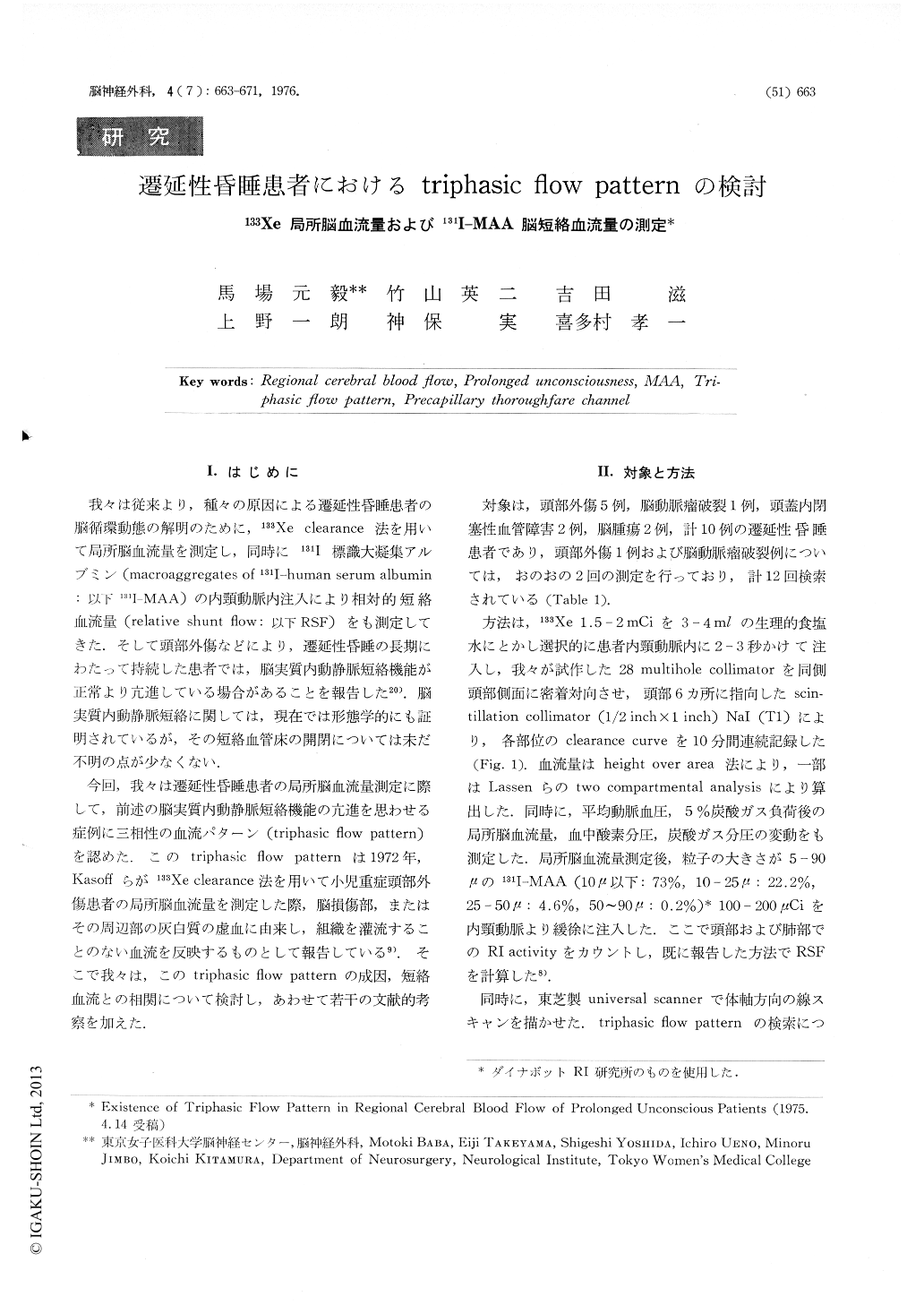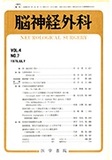Japanese
English
- 有料閲覧
- Abstract 文献概要
- 1ページ目 Look Inside
我々は従来より,種々の原因による遷延性昏睡患者の脳循環動態の解明のために,133Xe clearance法を用いて局所脳血流量を測定し,同時に131I標識大凝集アルブミン(macroaggregates of 131I-human serum albumin:以下131I-MAA)の内頸動脈内注入により相対的短絡血流量(relative shunt flow:以下RSF)をも測定してきた.そして頭部外傷などにより,遷延性昏睡の長期にわたって持続した患者では,脳実質内動静脈短絡機能が正常より充進している場合があることを報告した20).脳実質内動静脈短絡に関しては,現在では形態学的にも証明されているが,その短絡血管床の開閉については未だ不明の点が少なくない.
今回,我々は遷延性昏睡患者の局所脳血流量測定に際して,前述の脳実質内動静脈短絡機能の充進を思わせる症例に三相性の血流パターン(triphasic flow pattern)を認めた.このtriphasic flow patternは1972年,Kasoffらが133Xe clearance法を用いて小児重症頭部外傷患者の局所脳血流量を測定した際,脳損傷部,またはその周辺部の灰白質の虚血に由来し,組織を灌流することのない血流を反映するものとして報告している9).そこで我々は,このtriphasic flow patternの成因,短絡血流との相関について検討し,あわせて若干の文献的考察を加えた.
Anticipating to get some new informations about the cerebral circulations of the comatous patients, two kinds of radioisotopic techniques were combined and applied to twelve unconscious patients of various etiologies.
The first step was the conventional gas clearance method using xenon 133 as the indicator. Regional cerebral blood flows were measured at the six areas over each hemisphere.

Copyright © 1976, Igaku-Shoin Ltd. All rights reserved.


